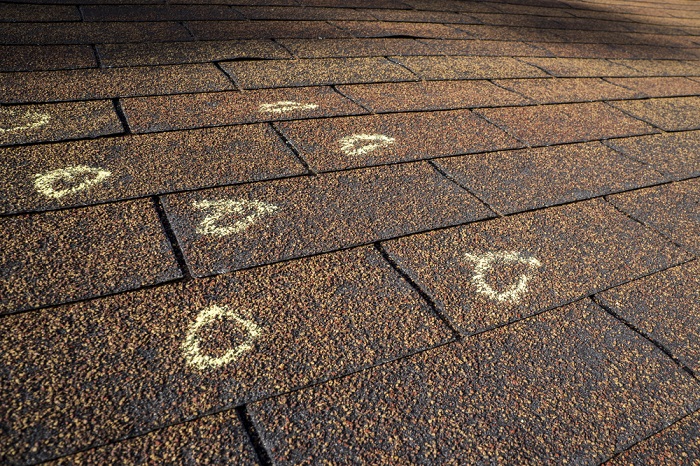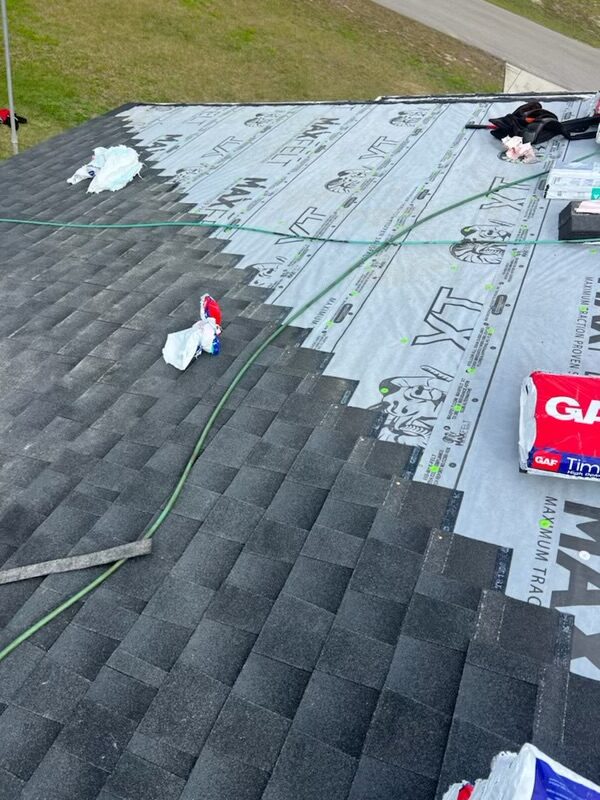
Hail Damage impacts can cause considerable damage to roofs, especially over time. The Federal Alliance for Safe Homes estimates that hail is responsible for over $1.6 billion worth of damage each year. Considering figures like this, homeowners can make hefty insurance claims for the damage caused by hail to their houses’ roofs. But in order to effectively place such a claim, the homeowner needs to know how to find and identify hail damage. The following are some tips on how to do that.
The first thing you will want to do if possible is get up on top of the roof and inspect the shingles. Safety is paramount here: if the roof is very steep or you have concerns about its safety, get a professional to inspect the roof. Once up on the roof, take a close look at the shingle surfaces. Hail impacts create circular dents or “dimples” in the granular material that tops the shingles. If you find these on one shingle, continue looking at others and check for similar denting. These dents can allow water to seep through the shingles and can worsen over time.
Another area to check if you are able to get up on the roof (or are having a handyman do it) is the flashing areas around vent pipes, chimneys, in valleys where roofs meet, around skylights, and so on. As hail hits, it tends to knock an inordinate amount of shingle granules off and these end up in the areas just mentioned. Finding a lot of granules on the flashing is one of the best ways to identify hail damage.
You can also check to see if these granules have ended up in gutters that run along the edge of the roof. Caution is especially in order here, and you may even want to use a ladder and inspect gutters from a standing position on the ladder rather than going to the roof edge from on the roof.
Checking downspouts is something you can do from down on the ground. Check the mouth of the downspout and the ground around it for shingle granules. If you find an inordinate amount this can indicate hail damage, since granules that have been knocked off get washed into gutters and then down the downspouts.
One of the main functions of a roof is to protect against water leaking into a house. If sufficient hail damage has occurred, leaks can be the result. It is a good idea to try and find these leaks, especially if there are other indicators of hail damage. Check the roof from inside the house by looking between rafters and along the soffits. If you feel any moistness or see droplets you definitely have a leak. Also check ceilings of the top floor for staining that is the precursor to full fledged leaks that can damage ceilings, walls, and floors. These leaks should be taken care of immediately to avoid further damage to the house. If you are not able to find the leaks find a local roofing service provider that can help you.

18 May
Getting an Air Conditioning Installation is a significant investment for any homeowner in Ocala, FL. […]

25 Feb
Roof Replacement Success Story: 15746 SW 42nd Terrace Ocala, Florida 34473 Introduction: Did a leaky […]

24 Feb
Roof Replacement done at 5148 SW 129TH PL , OCALA FL 34473. This property is located in the Marion Oaks Community located in Ocala, Florida.